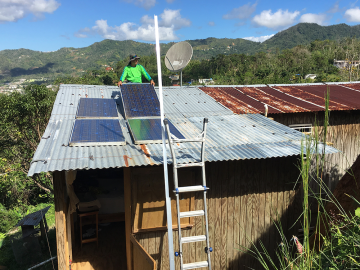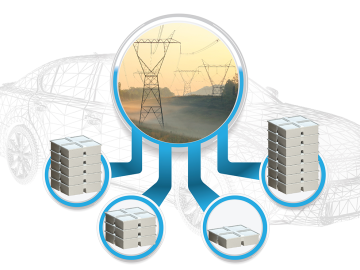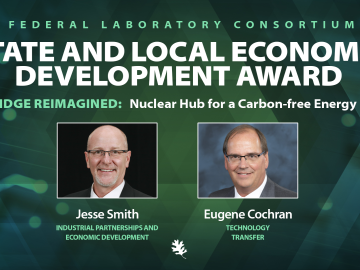
Filter News
Area of Research
- (-) Energy Science (103)
- (-) Materials (59)
- (-) National Security (36)
- Advanced Manufacturing (7)
- Biology and Environment (65)
- Biology and Soft Matter (1)
- Building Technologies (1)
- Computational Biology (1)
- Computational Engineering (3)
- Computer Science (15)
- Electricity and Smart Grid (3)
- Fuel Cycle Science and Technology (1)
- Functional Materials for Energy (1)
- Fusion and Fission (29)
- Fusion Energy (11)
- Isotope Development and Production (1)
- Isotopes (5)
- Materials for Computing (10)
- Mathematics (1)
- Neutron Science (22)
- Nuclear Science and Technology (37)
- Nuclear Systems Modeling, Simulation and Validation (1)
- Quantum information Science (9)
- Sensors and Controls (1)
- Supercomputing (128)
News Topics
- (-) Composites (19)
- (-) Computer Science (50)
- (-) Grid (44)
- (-) Machine Learning (20)
- (-) Nuclear Energy (26)
- (-) Quantum Science (13)
- 3-D Printing/Advanced Manufacturing (92)
- Advanced Reactors (10)
- Artificial Intelligence (24)
- Big Data (12)
- Bioenergy (32)
- Biology (15)
- Biomedical (11)
- Biotechnology (5)
- Buildings (38)
- Chemical Sciences (33)
- Clean Water (10)
- Coronavirus (16)
- Critical Materials (19)
- Cybersecurity (26)
- Energy Storage (85)
- Environment (69)
- Exascale Computing (3)
- Fossil Energy (2)
- Frontier (3)
- Fusion (8)
- High-Performance Computing (13)
- Hydropower (3)
- Irradiation (1)
- Isotopes (13)
- ITER (1)
- Materials (95)
- Materials Science (90)
- Mathematics (3)
- Mercury (3)
- Microelectronics (1)
- Microscopy (29)
- Molten Salt (3)
- Nanotechnology (41)
- National Security (37)
- Neutron Science (44)
- Partnerships (20)
- Physics (28)
- Polymers (21)
- Quantum Computing (3)
- Security (15)
- Simulation (4)
- Space Exploration (5)
- Statistics (1)
- Summit (8)
- Transportation (72)
Media Contacts

Scientists at ORNL developed a competitive, eco-friendly alternative made without harmful blowing agents.

Stephen Dahunsi’s desire to see more countries safely deploy nuclear energy is personal. Growing up in Nigeria, he routinely witnessed prolonged electricity blackouts as a result of unreliable energy supplies. It’s a problem he hopes future generations won’t have to experience.

ORNL researchers Ben Ollis and Max Ferrari will be in Adjuntas to join the March 18 festivities but also to hammer out more technical details of their contribution to the project: making the microgrids even more reliable.

When aging vehicle batteries lack the juice to power your car anymore, they may still hold energy. Yet it’s tough to find new uses for lithium-ion batteries with different makers, ages and sizes. A solution is urgently needed because battery recycling options are scarce.

U2opia Technology, a consortium of technology and administrative executives with extensive experience in both industry and defense, has exclusively licensed two technologies from ORNL that offer a new method for advanced cybersecurity monitoring in real time.

Three scientists from the Department of Energy’s Oak Ridge National Laboratory have been elected fellows of the American Association for the Advancement of Science, or AAAS.

A partnership of ORNL, the Tennessee Department of Economic and Community Development, the Community Reuse Organization of East Tennessee and TVA that aims to attract nuclear energy-related firms to Oak Ridge has been recognized with a state and local economic development award from the Federal Laboratory Consortium.

Critical Materials Institute researchers at Oak Ridge National Laboratory and Arizona State University studied the mineral monazite, an important source of rare-earth elements, to enhance methods of recovering critical materials for energy, defense and manufacturing applications.

David McCollum, a senior scientist at the ORNL and lead for the lab’s contributions to the Net Zero World Initiative, was one of more than 35,000 attendees in Egypt at the November 2022 Sharm El-Sheikh United Nations Framework Convention on Climate Change, or UNFCCC, Conference of the Parties, also known as COP27.

The U.S. Departments of Energy and Defense teamed up to create a series of weld filler materials that could dramatically improve high-strength steel repair in vehicles, bridges and pipelines.


